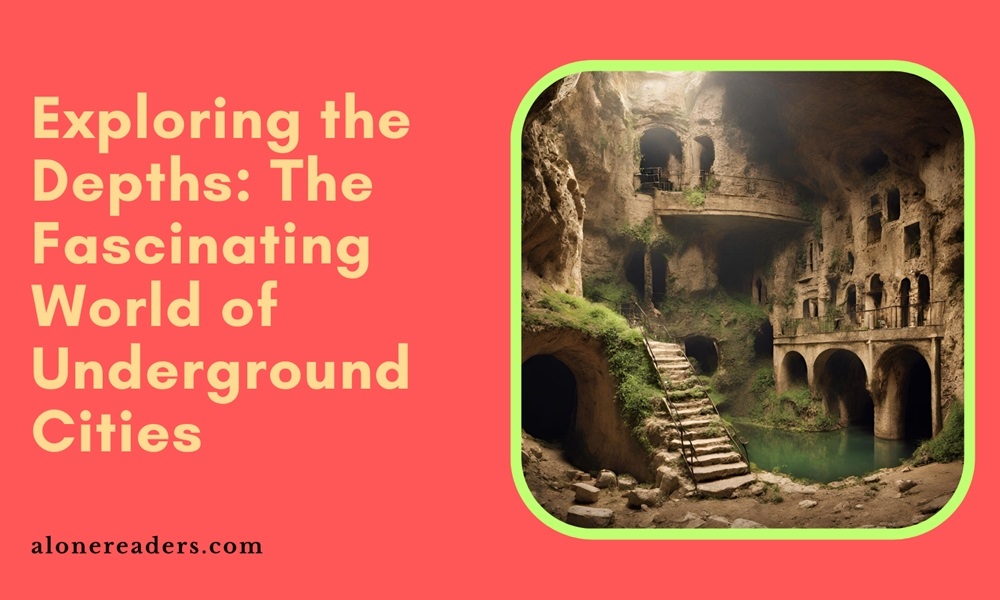
Underground cities, those fascinating subterranean landscapes beneath our bustling urban environments, remain one of the world's most intriguing and less explored areas. This article delves into the depths of these hidden cities, shedding light on their historical significance, architectural marvels, and the unique lifestyles they harbor.
Ancient Origins and Purposes
The concept of underground living is not new. Historically, these cities were built for various reasons, including climate control, protection from conflicts, and religious purposes. In regions with extreme weather conditions, underground settlements provided a more temperate living environment. For instance, in Cappadocia, Turkey, entire underground networks were carved as early as the 7th century BC, serving as refuge against invasions.
War and Secrecy
During wartime, underground cities have played crucial roles. The Cu Chi tunnels of Vietnam, for instance, housed soldiers and facilitated covert operations during the Vietnam War. These hidden cities were not only strategic but also a testament to human resilience and ingenuity in the face of adversity.
Engineering and Design
The architectural design of underground cities is a marvel in itself. Building underground requires ingenious engineering to ensure ventilation, lighting, and structural stability. The ancient city of Derinkuyu in Turkey is a prime example. This multi-level city could accommodate up to 20,000 people and included amenities like stables, churches, and wine cellars.
Modern Underground Cities
In contemporary times, the concept of underground cities has evolved. Cities like Montreal and Tokyo have extensive underground networks that include shopping centers, transit systems, and pedestrian walkways. These modern marvels are designed for convenience and efficiency, seamlessly integrating with the urban fabric above.
Daily Living and Culture
Life in underground cities is unique and varies from one location to another. In historical underground cities, residents led a life much different from the surface, adapting to limited light and confined spaces. Today, underground spaces in urban areas offer a bustling world of commerce and connectivity, often unseen by those walking above.
Challenges and Innovations
Living or working underground comes with its challenges, including psychological impacts of limited natural light and space. However, technological advancements have made underground living more comfortable and sustainable. Innovative lighting systems mimic natural light, and advanced ventilation systems ensure a healthy air supply.
Preserving History
Many ancient underground cities are now significant archaeological and tourist sites. Efforts are made to preserve these historical marvels while allowing visitors to experience their wonder. For example, the catacombs of Paris, which house the remains of millions, offer guided tours, allowing a glimpse into the city's past.
Responsible Tourism
As tourism increases, the challenge of preserving these sites while keeping them accessible arises. Responsible tourism practices are essential to ensure that the historical integrity and natural environment of these underground wonders are maintained for future generations.
Urban Planning and Sustainability
Underground cities are becoming increasingly relevant in urban planning, especially for sustainable development. Utilizing underground space can reduce surface congestion and environmental impact. Innovations in construction and environmental control technologies are making subterranean development a viable solution for growing urban populations.
Imagining New Possibilities
The future could see an increase in underground residential spaces, recreational areas, and even farming. The potential of these spaces is vast, offering solutions to many modern urban challenges while opening a world of architectural and cultural possibilities.
The hidden world of underground cities is a testament to human creativity and adaptability. From ancient refuges to modern urban solutions, these subterranean spaces tell a story of survival, innovation, and the unyielding human spirit. As we continue to explore and develop these hidden realms, we unlock new potential for our future, both beneath and above the ground.